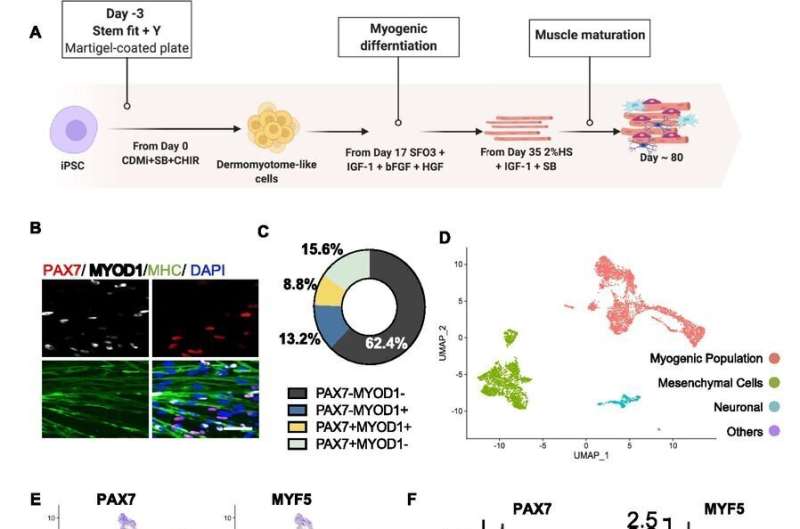Single-cell RNA sequencing of hiPSC-derived muscle progenitor cells identifies key factors of proliferation

A group led by Dr. Minas Nalbandian has established an atlas of human pluripotent stem cell-derived muscle progenitor cells (hiPSC-MuPCs) and found the heterogeneity in hiPSC-MuPCs.
The research group has been developing transplantation therapy of hiPSC-MuPCs as a treatment for skeletal muscle diseases such as Duchenne muscular dystrophy (DMD). However, it was unclear whether hiPSC-MuPCs has a uniform cell population or not.
In this study, the group performed single-cell RNA sequencing (scRNA-seq) of hiPSC-MuPCs cultures to study the cell heterogeneity of the myogenic subset of cells and found four clusters of cells: noncycling progenitors, cycling, committed, and myocytes. Furthermore, they found FGFR4 and CD36 to be useful markers for separating these subpopulations and demonstrated that the FGFR4-positive cell population has a higher regenerative capacity.
The findings were published in Life Science Alliance on 22 April 2022.
More information: Minas Nalbandian et al, Single-cell RNAseq reveals heterogeneity in hiPSC-MuPCs and E2F as a key regulator of proliferation, Life Science Alliance (2022).
Provided by Kyoto University















